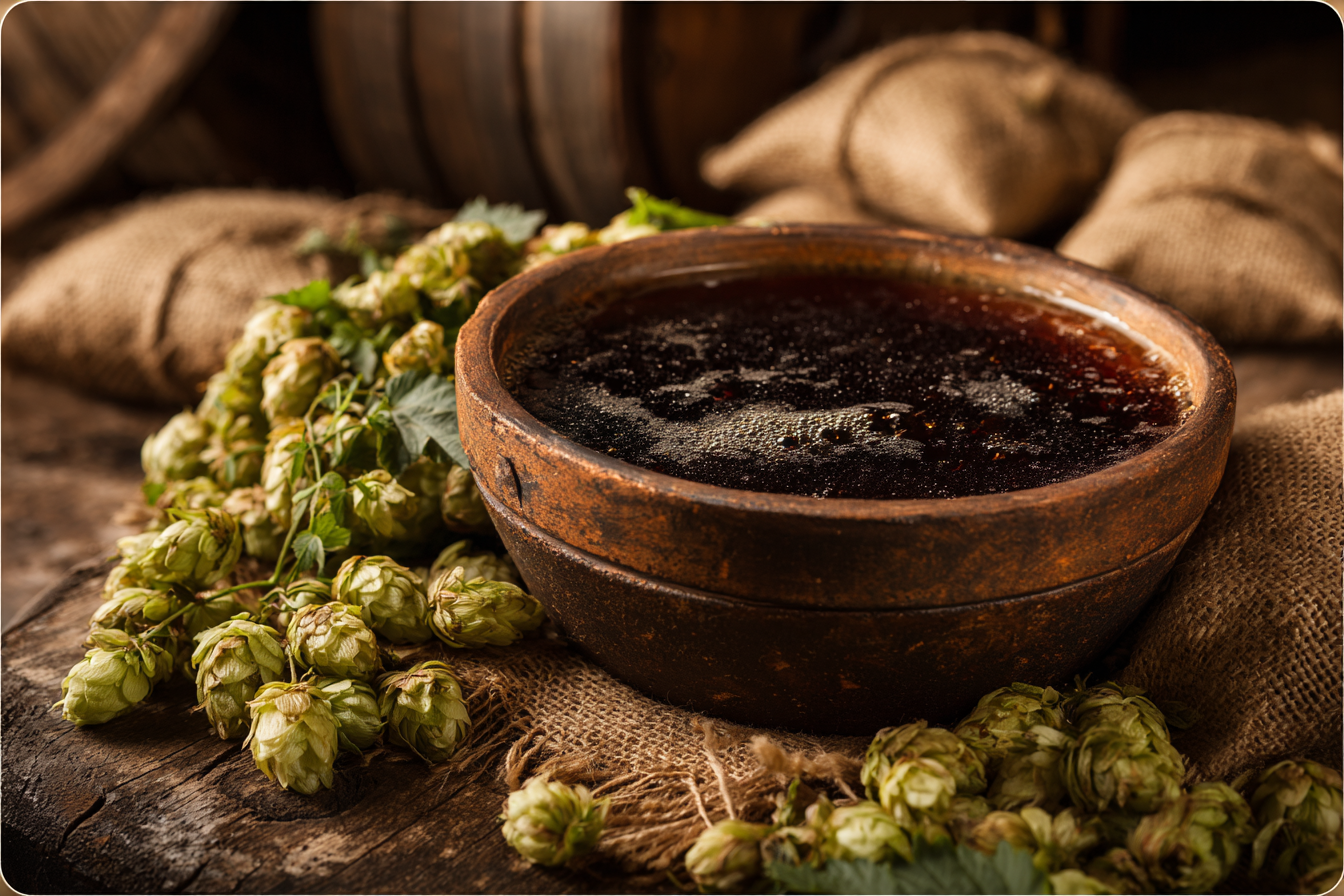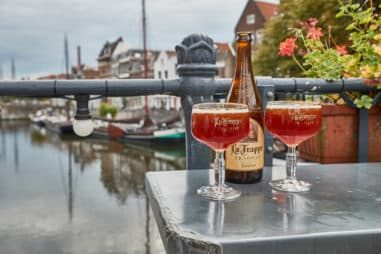Brewing a Baltic Porter is a rewarding endeavor for beer enthusiasts who appreciate rich, malty flavors combined with a smooth, clean finish. This beer style, which originates from the Baltic Sea region, is known for its robust character, featuring notes of chocolate, caramel, and sometimes a subtle smokiness, all balanced by a moderate alcohol strength and a crisp lagering finish. Whether you are a seasoned homebrewer or just looking to try your hand at a more complex style, mastering the Baltic Porter brewing process will deepen your appreciation for the craft and yield a beer that’s both flavorful and refreshing.
Overview of Baltic Porter Style Characteristics
The Baltic Porter is a unique hybrid beer that blends the robust, roasted qualities of an English porter with the clean, crisp characteristics of a lager. Unlike English porters, which are typically ales fermented with ale yeast, Baltic Porters are traditionally lagered, giving them a smoother mouthfeel and a cleaner finish.
In terms of appearance, Baltic Porters are usually very dark, almost black, with rich ruby or mahogany hues when held to light. The aroma often presents a complex malt profile, including chocolate, caramel, and hints of dried fruit or toffee. The flavor profile is similarly layered, showcasing roasted malts balanced by moderate bitterness and a noticeable but not overpowering sweetness. The alcohol content typically ranges from 7% to 9% ABV, lending a warming quality without overwhelming the palate.
The smooth, full-bodied texture combined with a gentle carbonation makes the Baltic Porter a perfect brewing challenge for those wanting to produce a beer with depth and refinement.
Essential Ingredients for Brewing
The foundation of any great Baltic Porter lies in selecting the right ingredients. Each plays a crucial role in achieving the style’s signature profile.
- Malt: The grain bill is dominated by base malts such as pale malt or pilsner malt, providing a clean, fermentable sugar base. Specialty malts like Munich, Vienna, crystal, chocolate malt, and black patent malt contribute color, sweetness, and complex roasted notes. Some brewers also add a small portion of smoked malt for an authentic Baltic twist.
- Hops: Baltic Porters traditionally use moderate hopping rates with noble or bittering varieties such as East Kent Goldings, Saaz, or Tettnang. The goal is to balance the malt sweetness without overpowering it with bitterness or aroma.
- Yeast: Lager yeast strains that ferment cleanly at cooler temperatures are the hallmark of this style. A traditional lager yeast ensures the smooth finish and allows malt complexity to shine.
- Water: Soft to moderately hard water is preferred, ensuring that the malt and hop flavors remain balanced and the mouthfeel stays smooth.
Mashing and Wort Preparation
The mashing process is where much of the Baltic Porter’s body and flavor begin to take shape. A step mash technique is often beneficial to fully develop malt complexity and extract fermentable sugars effectively.
Typically, start with a protein rest at around 122°F (50°C) for 20-30 minutes to improve head retention and clarity. Then raise to a saccharification rest in the 148-156°F (64-69°C) range, depending on your desired body level—lower temperatures will produce more fermentable sugars and a lighter body, while higher temperatures emphasize dextrins for fullness and sweet maltiness.
After mashing, perform a thorough mash out at 168°F (76°C) to stop enzymatic activity and ease lautering. Conduct a slow sparge to maximize extraction while avoiding tannin pickup, which can lead to harsh flavors.
Once the wort is collected, bring it to a vigorous boil, typically lasting 60 to 90 minutes. The extended boil helps concentrate the wort and promotes Maillard reactions, deepening the beer’s color and complexity. Add hops strategically throughout the boil for bitterness and subtle flavors.
The Role of Yeast and Fermentation Specifics
The fermentation phase is critical in defining the Baltic Porter’s clean yet rich character. Using a lager yeast strain like Saccharomyces pastorianus is essential for producing the smooth, crisp profile associated with the style.
Fermentation should begin at a relatively low temperature, around 50°F (10°C), to avoid off-flavors. As fermentation progresses over 7 to 14 days, gradually raising the temperature to 55-60°F (13-16°C) helps the yeast clean up any undesirable byproducts and fully attenuate the sugars.
Unlike ales, the fermentation of Baltic Porters takes longer and at cooler temperatures, contributing to their trademark smoothness. Monitor gravity and taste frequently to determine when fermentation is complete.
Lagering and Maturation Phases
After fermentation, the wort is far from finished. Proper lagering is what truly differentiates Baltic Porters from their ale counterparts.
Transfer the beer to a secondary vessel or directly to kegs or bottles and maintain it at cold temperatures between 32-40°F (0-4°C) for several weeks—typically 4 to 8 weeks, though some brewers extend this to three months or more. This cold storage phase allows flavors to mellow and harmonize, reduces harshness, and develops the silky mouthfeel typical of mature Baltic Porters.
Patience in this phase pays off handsomely. A well-lagered Baltic Porter will exhibit a clean finish that balances its rich malt backbone without any lingering heaviness or off-flavors.
Tips for Replicating Traditional Flavors
To replicate the authentic flavor profile of traditional Baltic Porters, consider the following tips:
- Use a multi-step mash to maximize malt complexity, ensuring a balance of sweetness and body.
- Choose high-quality specialty malts from reputable suppliers to capture the nuances of chocolate, caramel, and roasted notes.
- Be moderate with hopping; avoid overpowering the malt. Nobly hopping early in the boil focuses on bitterness rather than aroma.
- Employ a clean, lager yeast strain and precise temperature control during fermentation.
- Don’t rush the lagering phase—cold and slow maturation is key to smoothing out harsher elements and refining the character.
Common Brewing Challenges and Solutions
Brewing a Baltic Porter is not without its hurdles, but understanding these challenges in advance can help you avoid pitfalls:
- Mash Efficiency: Dense grain bills with roasted malts can stick in the mash tun. Ensure your lautering technique is gentle and consider adding rice hulls to improve wort runoff.
- Off-flavors from Fermentation: Temperatures that are too warm can produce unwanted esters or sulfur notes. Use temperature-controlled fermentation equipment to maintain stable lagering temperatures.
- Extended Lagering Time: The long maturation phase can test patience. Plan your brewing schedule carefully to allow enough time for this critical phase without shortcuts.
- Balancing Bitterness and Sweetness: Achieving harmony between malt sweetness and hop bitterness is tricky. Make hop additions conservative and adjust malt bill carefully based on previous batches.
Bringing It All Together: Brewing Your Baltic Porter
Crafting a Baltic Porter at home can be both a challenging and immensely satisfying project. With careful attention to malt selection, mashing procedures, fermentation control, and patient lagering, you can produce a beer that captures the essence of this storied style. Remember that temperature control and timing are crucial throughout the process, especially during fermentation and maturation.
Experiment with small batches to dial in your recipe and process. Share your creations with fellow homebrewers or friends to get feedback and make improvements. Most importantly, enjoy the journey of mastering this rich, complex beer style—it’s a true testament to the art and science of brewing.







